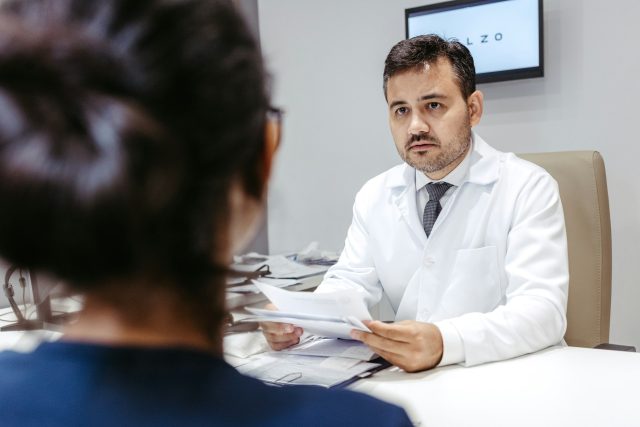
The Additional Roles Reimbursement Scheme (ARRS) is one of the most significant workforce initiatives in UK primary care, designed to address mounting pressures on GP practices whilst improving patient access to healthcare services. Introduced in 2019 as part of the NHS Long Term Plan, the scheme has fundamentally changed how primary care teams operate across England.
Understanding the ARRS
The GP ARRS provides funding for Primary Care Networks (PCNs) to employ additional healthcare professionals who work alongside GPs to deliver patient care. Rather than replacing GPs, these roles complement existing services and allow GPs to focus on the most complex cases requiring their specific expertise.
The scheme has already recruited over 37,000 additional staff members since its launch, exceeding the original target of 26,000 additional personnel by 2024. This represents a substantial expansion of the primary care workforce at a time when GP recruitment has been challenging.
How the Funding Works
For 2025/26, the ARRS has been allocated £1.697 billion, representing a significant investment in primary care transformation. This funding is managed centrally by NHS England and is allocated to PCNs based on their patient population size.
Each PCN receives a funding allocation that they can use to employ staff up to specified maximum reimbursement amounts. The scheme covers salary costs and some additional expenses such as training and equipment, making it financially attractive for PCNs to expand their teams.
Funding is distributed through a claims-based system where PCNs submit monthly claims for their ARRS-funded staff through a dedicated portal, with claims reviewed and approved by Integrated Care Boards.
Major Expansion in 2025/26
A significant development occurred in 2024 when £82 million additional funding was announced to include recently qualified GPs in the scheme. From October 2024, PCNs have been able to claim reimbursement for GPs who qualified within the last two years.
For 2025/26, this has been expanded further with both GPs and practice nurses now included as core ARRS roles. The reimbursement rate for GPs has been increased to align with BMA recommended pay ranges (£9,305 to £82,418 plus onboarding costs), making the scheme more attractive for recruitment.
Roles Covered by ARRS
The scheme now covers 18 different roles, each designed to address specific aspects of primary care delivery:
Clinical Roles:
- Clinical Pharmacists (providing medication reviews and chronic disease management)
- First Contact Physiotherapists (managing musculoskeletal conditions)
- Paramedics (handling urgent care and home visits)
- Advanced Practitioners (providing advanced clinical assessment and treatment)
- Mental Health Practitioners (for both adults and children/young people)
- Practice Nurses (newly added for 2025/26)
- General Practitioners (newly qualified, within two years)
Support Roles:
- Social Prescribing Link Workers (connecting patients to community resources)
- Care Coordinators (managing complex patient pathways)
- Health and Wellbeing Coaches (supporting lifestyle changes)
- Pharmacy Technicians (supporting medication management)
- Digital and Transformation Leads (improving technology use)
- General Practice Assistants (providing administrative and basic clinical support)
Specialist Roles:
- Occupational Therapists, Podiatrists, Dietitians, and Nursing Associates complete the comprehensive list of eligible roles.
Evidence of Effectiveness
Recent research has demonstrated the positive impact of ARRS roles. A 2025 study published in the British Journal of General Practice found that ARRS staff deployment was significantly associated with lower prescription rates and higher patient satisfaction scores.
The research, which analysed data from over 6,000 general practices, showed that practices employing ARRS staff achieved better clinical outcomes whilst improving patient experience. For clinical pharmacists specifically, reimbursement rates increased by 1.7% for 2025/26, with maximum reimbursable amounts reaching £66,972 nationally.
Accessing ARRS Funding
PCNs are responsible for managing ARRS funding and deciding which roles best meet their local population needs. The process involves:
Planning: PCNs assess their patient demographics, service gaps, and workforce requirements to determine which ARRS roles would be most beneficial.
Recruitment: PCNs can either employ staff directly, subcontract services from other organisations, or use shared employment models across multiple practices.
Claims Submission: Monthly claims are submitted through the NHS ARRS portal, detailing staff employment costs and activities.
Approval: Integrated Care Boards review and approve claims, ensuring compliance with scheme requirements.
Benefits for Practices and Patients
The scheme delivers multiple benefits across the healthcare system. For GP practices, ARRS roles help manage increasing demand whilst allowing GPs to concentrate on complex cases requiring their specific expertise.
Patients benefit from improved access to care, with many conditions now managed by appropriately trained specialists rather than requiring GP appointments. This has contributed to reduced waiting times and more comprehensive care for chronic conditions.
From a system perspective, the scheme supports the NHS’s move towards more integrated, multidisciplinary care delivery whilst providing career development opportunities for healthcare professionals in primary care settings.
Looking Forward
A joint review of the ARRS and its future will be conducted during 2025/26, providing an opportunity to assess the scheme’s impact and consider future developments. This review will examine how the scheme can continue to evolve to meet changing primary care needs whilst maintaining the positive outcomes already achieved.
The ARRS represents a fundamental shift in how primary care is delivered in England, moving from a GP-centric model to a multidisciplinary approach that better utilises the skills of different healthcare professionals whilst improving patient access and outcomes.




